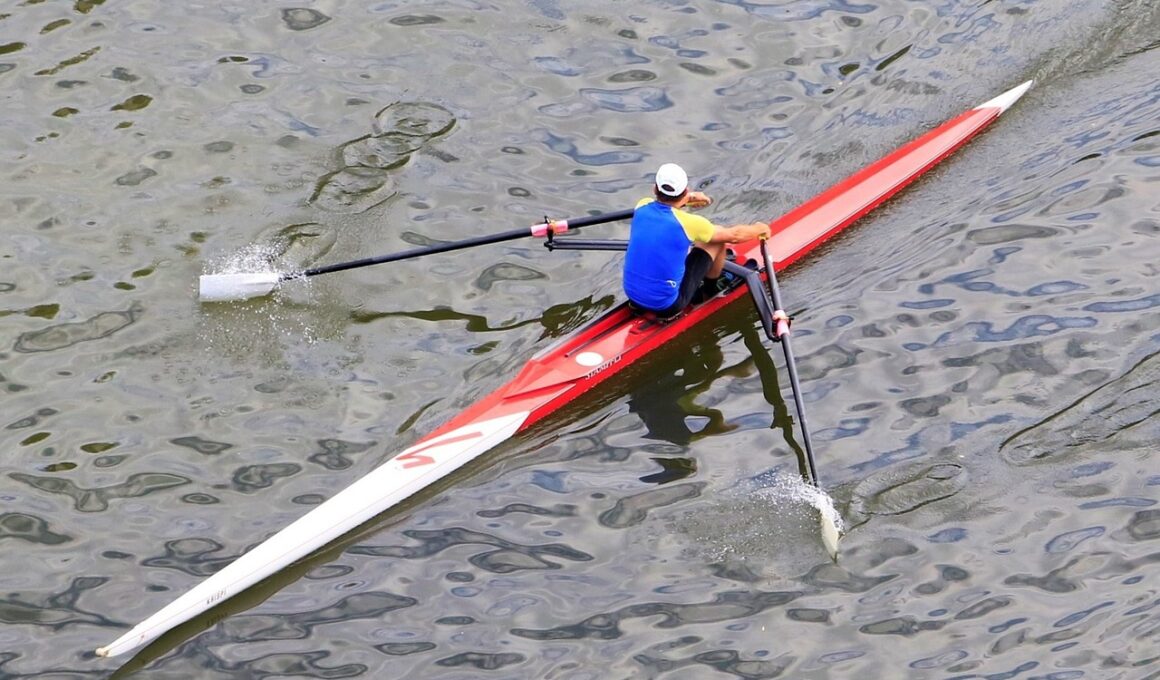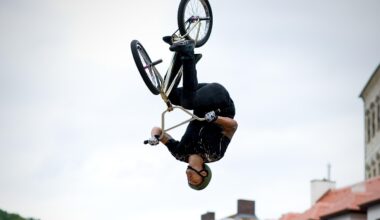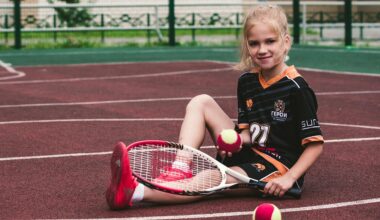The Impact of Rowing Associations on Olympic-Level Training
Rowing associations play a crucial role in shaping the training environment for Olympic-level athletes. Often, these organizations provide essential resources and support systems to foster talent. They connect athletes with experienced coaches who are instrumental in developing skills and techniques vital for competitive rowing. These associations also create opportunities for training camps and workshops, where athletes learn advanced strategies to improve their performance. Many associations establish partnerships with universities and sports institutions, amplifying the access to cutting-edge training facilities and technology. This collaboration is critical as Olympic training requires elite standards of preparation and a high level of competition. Furthermore, associations often host national and international competitions that serve as platforms for athletes to showcase their abilities. Through participation in these events, athletes gain valuable experience that contributes significantly to their overall development. Additionally, associations contribute to a supportive community, helping young rowers network and build connections that could aid their future careers. This nurturing environment is essential for instilling competitive spirit and perseverance among athletes striving for Olympic glory.
Support Systems within Rowing Associations
Within rowing associations, several support systems function to guide athletes toward success in their careers. These include mentorship programs where experienced rowers offer guidance to novices, sharing insights and experiences that are invaluable. The associations also typically provide access to a wealth of information and resources, including training regimens, nutritional advice, and fitness assessments tailored to individual needs. Access to qualified sports psychologists is another crucial aspect, as mental conditioning significantly affects athletic performance at high levels. Training often focuses on both physical and psychological preparedness, ensuring that athletes can handle the pressures of competition. Moreover, rowing associations unify clubs and teams, promoting collaboration and sharing best practices that enhance overall training approaches. These partnerships facilitate discussions on innovations in rowing techniques and equipment, keeping everyone informed of the latest developments. Additionally, associations may offer scholarships or financial assistance for athletes who excel but face economic challenges, ensuring that talent is nurtured regardless of financial background. This holistic support structure enables rowers to thrive and pursue their Olympic dreams with determination and confidence.
The role of rowing associations extends beyond merely training athletes; they impact the entire rowing community. By establishing a network, these associations unify clubs across regions, fostering a collaborative spirit. They organize events that promote inclusivity and diversity within the sport, encouraging participation amongst various demographics. This focus on diversity ensures that rowing welcomes individuals from all backgrounds, enriching the sport’s culture. Additionally, associations work closely with local schools and youth programs, introducing the sport to young athletes early on. This grassroots approach helps cultivate interest in rowing, creating a pipeline of future Olympians. By developing youth programs and organizing competitions, associations actively contribute to building a strong foundation for the sport. These initiatives not only foster talent at a young age but also create a sense of community as athletes support one another. The commitment to inclusivity also means that associations actively promote female participation in rowing. This advocacy for women’s rowing ensures equal opportunities within the sport, further enhancing its growth and reach while inspiring future generations of female athletes.
Another vital aspect of rowing associations is their advocacy for athlete welfare and safety. These organizations work rigorously to implement training standards that prioritize the health and safety of their members. Emphasizing safe practices during training sessions and competitions minimizes the risk of injury, allowing rowers to reach their full potential unhindered. By establishing protocols for equipment maintenance and safe boating practices, associations play a pivotal role in ensuring a secure environment for all athletes. Furthermore, they may also sponsor workshops that educate athletes on injury prevention and recovery strategies, equipping them with knowledge that enhances their performance sustainability. The commitment to athlete welfare also includes mental health support, which is essential in a high-pressure environment. Rowing associations promote a culture where mental well-being is prioritized, offering resources and education to help athletes manage stress and anxiety. Organizations understand that optimal performance stems from both physical and mental readiness. Through their comprehensive focus on safety and health, rowing associations create a reliable support system that athletes can depend on throughout their training cycles and competitions.
Promotion of Technical Development
Rowing associations are pivotal in promoting technical development within the sport. By providing access to coaching clinics and training sessions led by experts, they ensure that athletes are familiar with the most effective rowing techniques. These technical sessions often cover crucial areas, including stroke mechanics, boat handling, and race strategies to enhance performance levels. Access to world-class coaching not only benefits athletes but also helps develop the coaching staff, ensuring that knowledge is passed down through generations. This continuous professional development is vital for maintaining high standards in coaching techniques. Moreover, associations foster innovation in rowing technology, which aligns with their goal of enhancing athlete performance. By collaborating with engineers and sports scientists, they explore advancements in boat design, materials, and equipment that can provide competitive advantages. This commitment to technical excellence encourages a higher level of performance in competitions, particularly at the Olympic level. Additionally, competitive events organized by associations serve as benchmarks for athletes. They not only test the quality of training but also motivate rowers to push their limits as they strive for excellence against their peers.
The influence of rowing associations is also evident in their implementation of sports science and data analytics. Many associations increasingly integrate scientific methodologies in training programs, employing data analysis to monitor athletes’ performances. This consistent tracking of metrics, such as stroke rates and boat speed, allows coaches and athletes to identify areas needing improvement. Moreover, sports science plays an essential role in optimizing training regimens by tailoring workouts based on individual physiology. By understanding how different athletes respond to training stimuli, associations can craft personalized programs that maximize effectiveness. Additionally, the incorporation of recovery techniques grounded in scientific research aids athletes in maintaining peak performance levels while minimizing the risk of injuries. These advancements further solidify the importance of rowing associations as they navigate the evolving landscape of sports training. The application of technology and analytics not only elevates training standards but also nurtures a culture of constant improvement within teams and clubs. By effectively utilizing data, rowing associations set their athletes on a path toward achieving their Olympic dreams while ensuring they remain competitive in a dynamic sporting environment.
Conclusion: The Future of Rowing Associations
As the sport of rowing continues to evolve, the role of associations remains paramount. Their continued commitment to fostering athletic excellence, inclusivity, and innovation will shape the future of Olympic rowing. By aligning with technological advancements and integrating scientific methods into training, associations can enhance their offerings for athletes. Continued support toward youth and women in rowing will ensure sustainable growth within the sport. In the coming years, it will be essential for associations to stay adaptable, embracing changes that reflect broader societal shifts in sports and athletic participation. Furthermore, the focus on safety and athlete welfare will remain critical, as the health of athletes is intrinsic to their success and longevity in the sport. Partnerships with educational institutions and scientific communities will play a vital role in influencing policies that promote better training environments. The evolution of rowing associations will significantly impact athlete preparation and performances on the Olympic stage. By investing in the comprehensive development of athletes, associations ensure that the spirit of rowing thrives, representing the core values of dedication, teamwork, and excellence.
Rowing associations worldwide have the potential to redefine the competitive landscape, particularly at the Olympic level. Their pivotal roles in shaping training environments, developing technical skills, and advocating for athlete welfare demonstrate their importance. Through their collective efforts, these organizations contribute to the growth and accessibility of rowing, ensuring it remains a sport that inspires and challenges athletes globally. With an eye toward the future, rowing associations must continue to innovate and support their members, fostering a passion for rowing that transcends generations.


